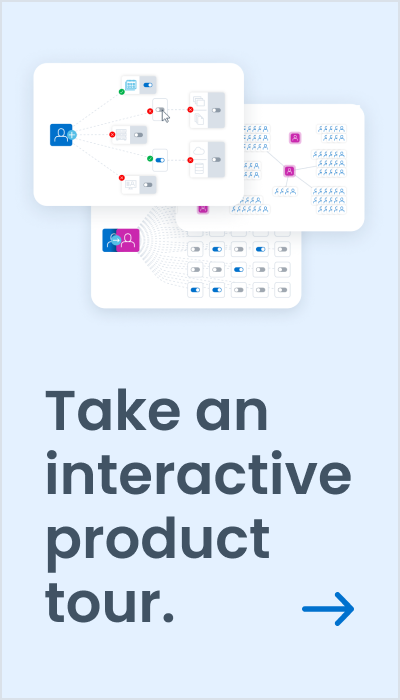Protecting Today’s Corporate Digital Identity with Identity Security
Today we try to safeguard our digital identity as much as our wallet and its contents. Our personal digital identity authorizes us to go about our day-to-day—logging into our bank account to pay bills, checking our Facebook page for notifications or scheduling an UberEats delivery for dinner —but then there is our professional digital identity. This version of us authenticates that we are who we say we are and is tied to tons of different applications and data we need to do our job. Now, think about an enterprise workforce and how many digital identities that comprises. The aggregation of users identities within a corporation is the equivalent of its own digital identity.
To truly secure that “corporate digital identity” – the very PII of the business – companies need to rethink how they protect their digital workforce. Otherwise, each worker can quickly become a target for hackers and a threat to the business.
Let’s take a very prominent real-world example to illustrate the point.
As we all went into lockdown at the start of the pandemic in March 2020, nearly every organization went into rush mode to convert to a virtual working environment. They were under such pressure to get their employees productive from home that they skipped right past the necessary security controls that would keep their business assets protected. In many cases, this opened up an expansive area of risk for those businesses who were not connecting the dots between identity access and securing that access for every digital identity across their workforce.
No business, virtual or not, can safely use technology without thinking through how to properly secure that access. Who should be given access? Do they actually warrant access to do their job? How long will that worker require access? Can it be shut-down after a short period of time or does it need to remain open for the long-term? Should this access be granted while having access to another system? These are questions no business can be sure of if they have simply opened the door without adding a layer of protection and risk mitigation on top of that access.
Think of it this way: at home, would you host a party without a security system put in place? Would you allow people into your home without a lock on your bedroom door to keep them from poking through your personal items, a safe in your closet to secure your financials, and an alarm on your back door to alert you if someone opens it in an attempt to sneak out undetected? It is one thing to allow friends and acquaintances into your home, but even friends don’t need to know the ins and outs of your personal information. We put security measures in place to protect our privacy.
Much like a home security system to keep strangers out, identity security (aka identity governance) is the “security system” of businesses. Granting access via access management is merely the front door security or the “bouncer,” physically keeping out who was not invited, but once allowed in the house or organization, access management is useless to control what people do with your goodies. It simply lets them in the lobby. Unattended. Ungoverned. Unsecured.
The key is to focus on both enablement and security – providing access to important technology and tools but properly controlling that access. It is critical today to know who among your workforce requires certain access, and then modify that access as their role changes, or restrict and even remove that access when it is not needed. You cannot open the door to technology use without these controls added or you may as well put down a welcome mat for hackers at the front door of your business.
The good news is that more businesses are waking up to this reality and are putting identity security at the top of their priority list. In fact, going back to the pandemic, the shift to remote work underscored how business essential identity security is today. The companies who prevailed during that quick pivot were those who put identity security at the foundation of their business.
Identity security has become a critical component of risk management and is the surest path forward to fully protect the “corporate digital identity” of any global business now and in the future.



Discussion